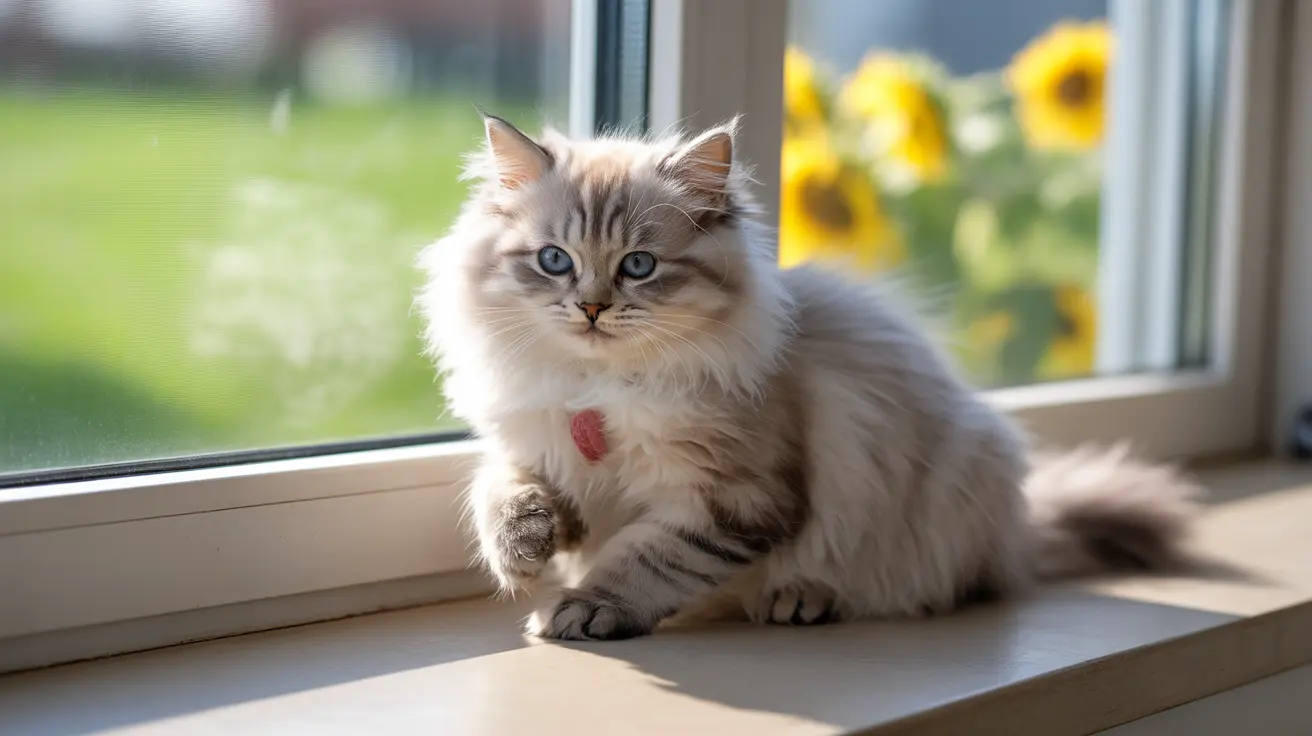Common Types of Bug Bites on Cats
Flea Bites
Flea bites appear as small, red, raised bumps, typically clustered around the base of the tail, belly, and inner thighs. These bites often cause intense itching, leading to excessive scratching and potential hair loss. You might notice "flea dirt" (black specks) in your cat's fur, which is actually flea droppings.
Tick Bites
Tick bites are identifiable by the presence of the tick itself, appearing as a small, dark bump attached to your cat's skin. After removal, the bite area may remain red and slightly swollen. Regular checking is essential, especially if your cat ventures outdoors.
Spider Bites
Spider bites can range from mild to severe, depending on the species. While most cause only minor swelling and discomfort, bites from black widows or brown recluse spiders require immediate veterinary attention. These dangerous bites can cause severe symptoms including muscle pain, tremors, and tissue damage.
Identifying Symptoms and Reactions
Mild Reactions
Common signs of insect bites include:
- Localized redness and swelling
- Scratching or pawing at the affected area
- Small raised bumps or welts
- Mild irritation or discomfort
Severe Reactions
Watch for these warning signs that require immediate veterinary care:
- Significant swelling, especially around the face
- Difficulty breathing
- Lethargy or weakness
- Vomiting or collapse
- Multiple bites or stings
Treatment and First Aid
Immediate Care Steps
When you notice bug bites on your cat:
- Carefully inspect the affected area
- Clean minor bites with mild soap and water
- Apply a cool compress to reduce swelling
- Monitor your cat's behavior and symptoms
- Contact your veterinarian if symptoms worsen
Professional Treatment
Your veterinarian may recommend:
- Antihistamines for allergic reactions
- Antibiotics if infection develops
- Specific treatments for identified parasites
- Additional testing if systemic symptoms occur
Prevention Strategies
Protect your cat from bug bites with these preventive measures:
- Use veterinarian-approved flea and tick preventatives
- Keep your home clean and vacuum regularly
- Check your cat regularly for parasites
- Consider keeping cats indoors
- Maintain window screens and seal entry points
Frequently Asked Questions
What do flea bites on cats look like and where are they usually found?
Flea bites appear as small, red, raised bumps, typically clustered around the base of the tail, belly, and inner thighs. They're often accompanied by black specks (flea dirt) and cause intense itching.
How can I identify tick bites on my cat and what should I do after removing a tick?
Tick bites are identified by finding the tick attached to the skin. After removal, clean the area with antiseptic and monitor for redness, swelling, or signs of infection. Keep the tick in a container for identification if needed.
What are the common symptoms of allergic reactions to insect bites in cats?
Common allergic reactions include excessive scratching, swelling, hives, difficulty breathing, and in severe cases, anaphylaxis. Some cats may develop hot spots or lose fur in affected areas.
How can I treat and prevent insect bites like mosquito or ant stings on my cat at home?
Clean the affected area with mild soap and water, apply cool compresses, and use veterinarian-approved antihistamines if recommended. Prevent future bites by using appropriate pest control and keeping your cat indoors during peak insect activity.
Where can I find reliable pictures of insect bites on cats to help identify the problem?
Reliable pictures of insect bites on cats can be found on veterinary websites, professional pet health resources, and veterinary dermatology sites. Your local vet clinic may also have reference materials available.
Conclusion
Understanding and identifying bug bites on your cat is crucial for their well-being. While many bites can be managed at home, always err on the side of caution and consult your veterinarian if you're unsure about the severity of the bite or if your cat shows concerning symptoms. Regular prevention and prompt treatment are key to keeping your feline friend comfortable and healthy.






